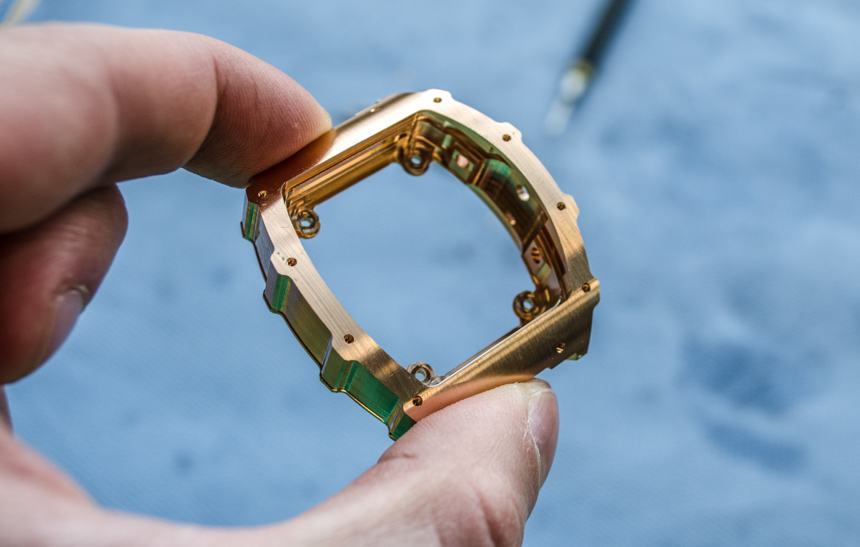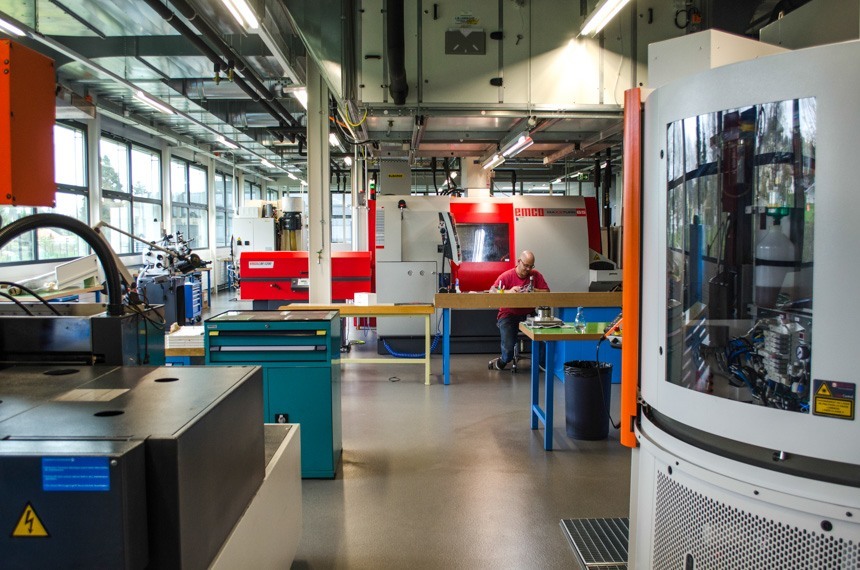
Opened in April, 2013, Richard Mille created ProArt upon losing its previous supplier of cases, as Donzé Baume was purchased by the Richemont group, forcing the brand to look for another source. Strategical moves such as this takeover happen rather often in the Swiss watch industry, as truly great suppliers are very difficult to find and hence are often bought up by larger luxury groups or brands. With that said, instead of going on a hunt for a new case making company to work with, Richard Mille set out to create their proprietary facility: ProArt.
Building a dedicated manufacturing site from scratch is an incomparably more investment-heavy solution than it is to find a new supplier, and yet brands have good reasons to go down this road. First of all, keeping things “in-house” offers much greater flexibility, something sorely needed by innovative brands with relatively low production figures. Secondly, at a time when the industry is booming and the demand for luxury watches has been constantly rising over the last two decades, nearly all suppliers are getting overbooked and are having difficulties with delivering the required quantities on time – or at all. Needless to say, most of these issues are non-existent when it comes to proprietary facilities. Last but not least, for brands with as many new designs as Richard Mille, it is borderline impossible to find a new supplier capable of promptly adapting to the special and constantly changing requirements, all the while also keeping up with the ever increasing demand.
Consequently, to avert similar issues in the future, Richard Mille established ProArt. Spread over its 3,000 square-meter premises, ProArt is an ultra-modern case and movement component manufacturing facility, comprising an impressive array of state of the art CNC machines and departments dedicated to the designing, testing, manufacturing and decorating of cases and select movement parts. It is here where some of the craziest case designs are coupled with bold new materials and one suiting example of that is NTPT carbon.
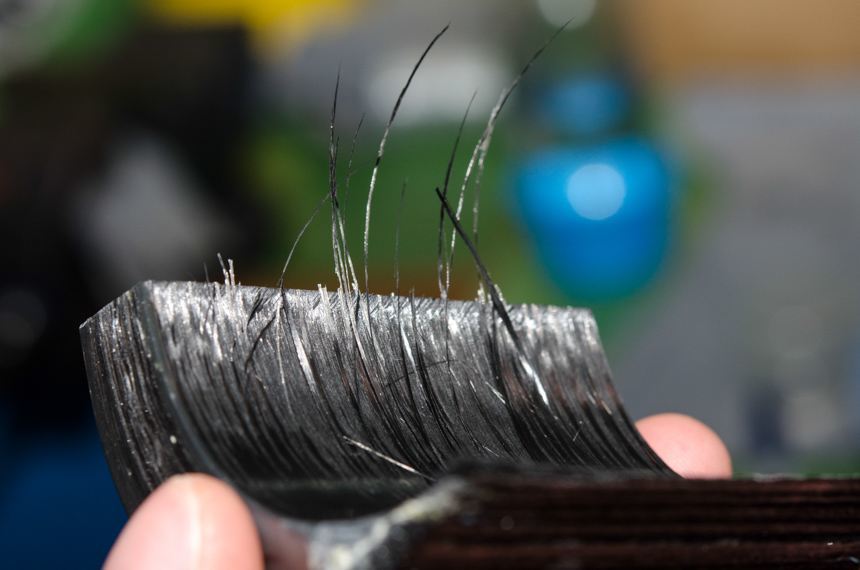
We are mentioning NTPT carbon because it perfectly illustrates some of the most pressing difficulties and challenges that most external suppliers simply could not overcome. To begin with, NTPT is an extremely hard material that was actually used for the masts of an America’s Cup winner boat. What matters more from our perspective however is that it is virtually impossible to break or scratch – and as such, it is very difficult to work with, as it weakens tools much like kryptonite weakens Superman (not the brand’s exact analogy). It is constructed from 30 micron thick carbon threads, woven into layers which are then stacked up in a way that the threads run diagonally, for additional strength. The material is held in one piece with a resin, much like in the case of more usual carbon fiber composites. Ultimately, the tonneau shaped case comprises around 800 layers, stacked on top of one another.
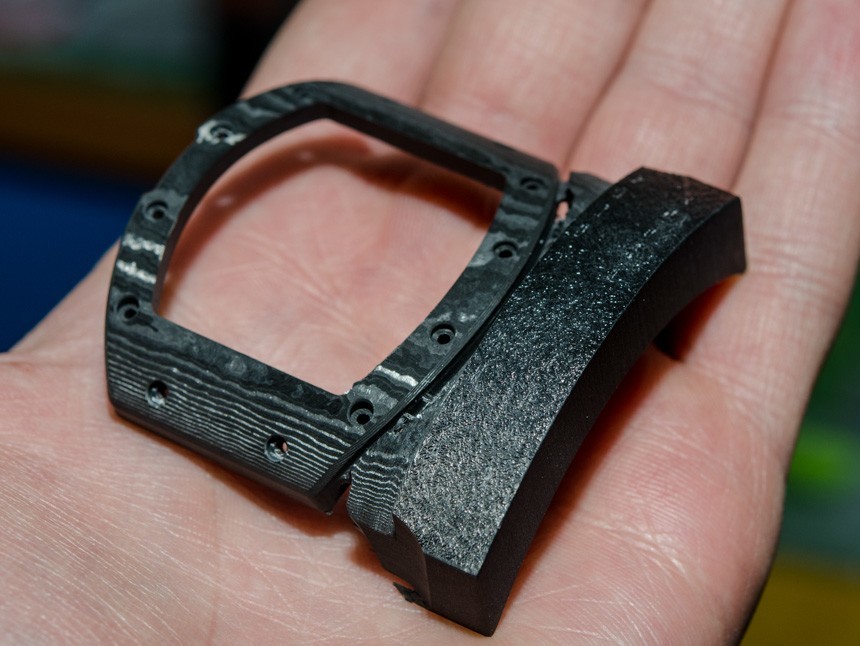
So, what is so special about this material? Not only is it resistant to shocks, impacts and scratches, but it also passed all tests (related to allergy, shock resistance and other factors) on first try, which is a very rare feat among new materials. During the visit, we ended up taking a sharp blade and scratching the surface of an NTPT case: we saw tiny steel colored lines show up on the surface but it turned out to be residue from the blade itself. Once we wiped that off, the case looked as though nothing happened and I can assure you we were not practicing much empathy while undertaking our perhaps childish yet revealing experiment. It is this special construction that makes it so durable and also so difficult to machine and the vast number of layers cause swift and excessive wear on traditional cutting tools.
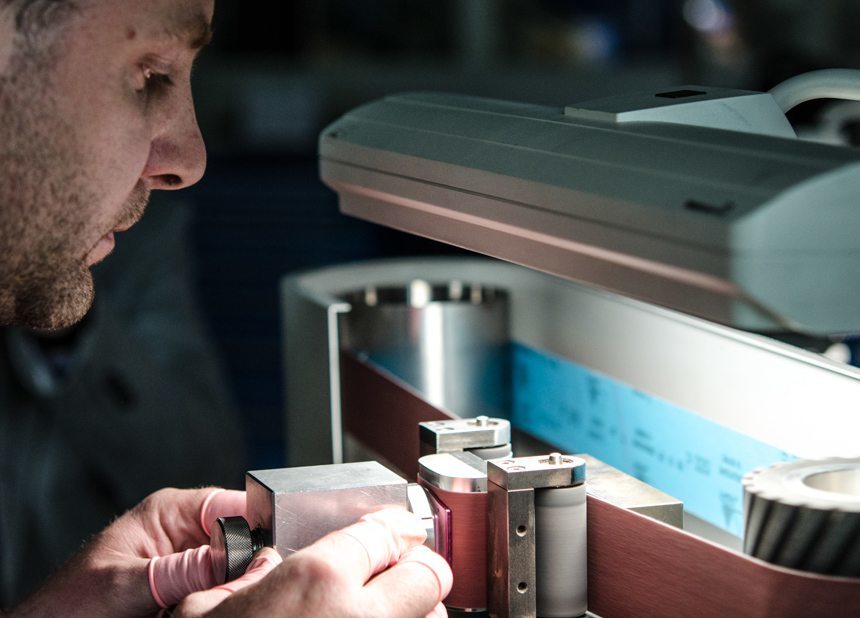
For an innovative brand, it is overcoming challenges like this, linked to the development of new materials and processes, that justifies the investment and the effort of creating a new manufacture. While the Swiss watch industry has always been and shall always be proud of its traditions, one has to realize that technological advancements have become a key to success, regardless of whether they concern manufacturing capabilities or end-product related developments. It is a technological arms race between small and major brands alike to find new solutions to enhancing the durability, accuracy or aesthetic properties of timepieces. And there is an obvious edge to having the ability of performing both the research and the realization under one’s own conditions.
More practically speaking, what ultimately stands out as most peculiar about this facility is the surprisingly low number of human beings working in it: it could best be described as a museum of very large, incredibly complicated and bafflingly expensive CNC machines, some working on just one small part with an engineer standing by continuously and others performing up to five tasks in series; all in almost perfect silence. Everything is excessively clean and well organized, even by Swiss manufacture standards.
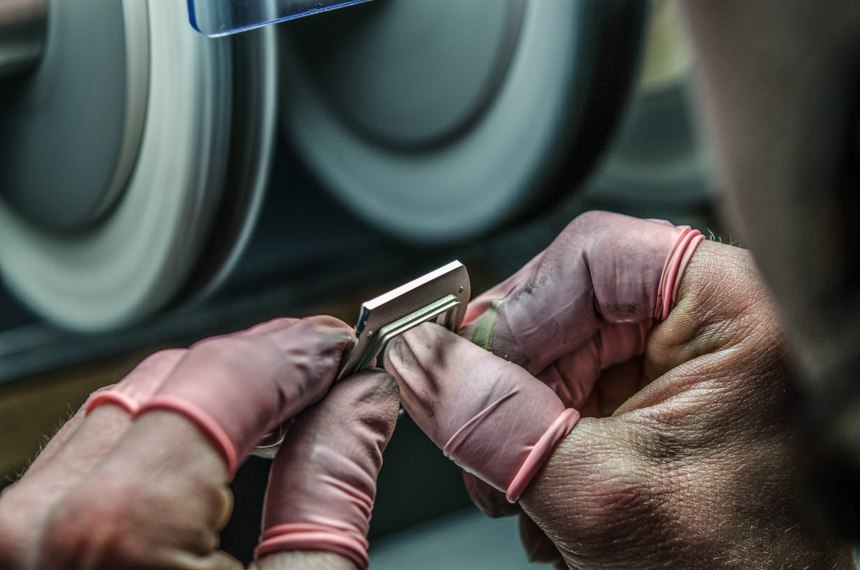
Human dexterity comes into play once components leave the CNC machines and are ready for hand-finishing. And while polishing is executed on more traditional tools, the tolerances are extremely minor and make for a very limited room for error. Otherwise, the different – and rather complex-shaped – components will not fit together. CNC tools are performing the lion’s share of work when it comes to crafting the components, while people work on the design, CNC programming and tooling, as well as the hand-finishing, assembling, and final quality checking of the different case and movement components.
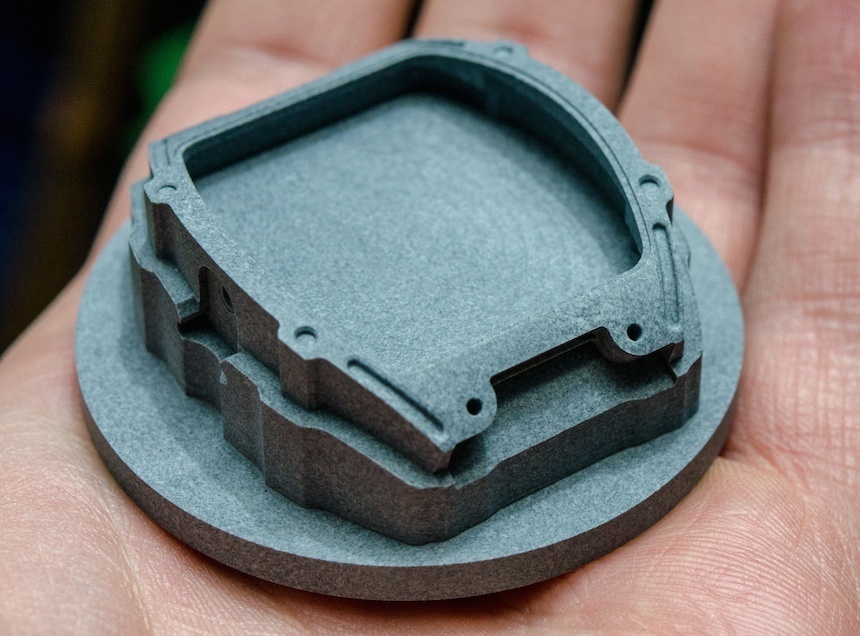
Overall, the brand Richard Mille has every reason to be proud of ProArt, its latest – and probably greatest – investment thus far. It enables it to go down its own roads that allow it to back up its bold ideas and even bolder pricing practices with truly impressive technological breakthroughs. Yet another prime example of this is how its models crafted from super-light materials are in the same price segment as gold and even platinum watches from widely acknowledged and more traditional brands. What you see above and below is the RM27-01 Rafael Nadal piece, one of the lightest wristwatches ever made; a reference that comprises everything Richard Mille is about: a proprietary movement, a space-age case material and a unique twist in its construction.
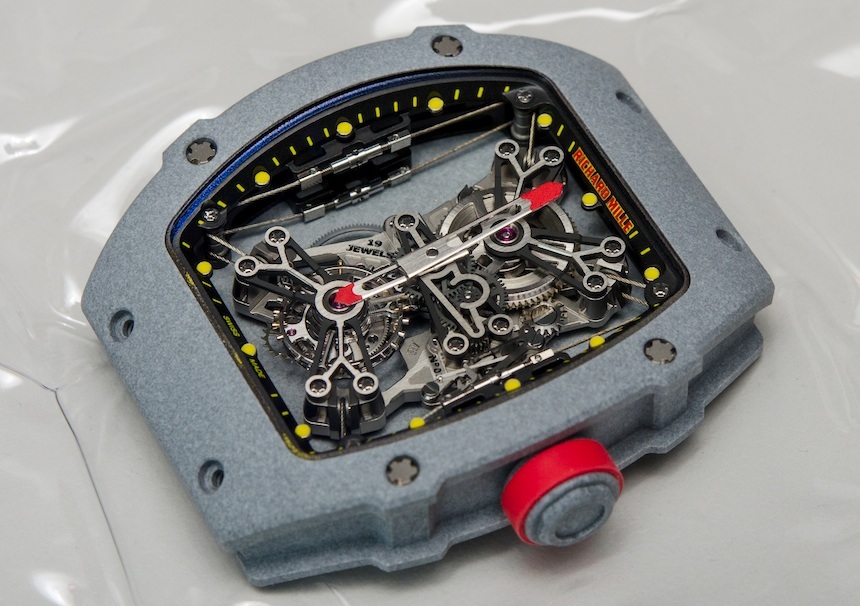
To begin with, its APR&P developed movement weighs in at 3.5 grams and is suspended in the air inside the case, hanging on barely visible metal cables, allowing the movement to move about a bit if and when it is exposed to fierce shocks. To top it all off, the case is made of a material constructed from nano tubes of carbon, impregnated with an epoxy resin. It is so light that the watch without the bracelet weighs a truly featherweight 13 grams, and that’s with the movement installed, of course.
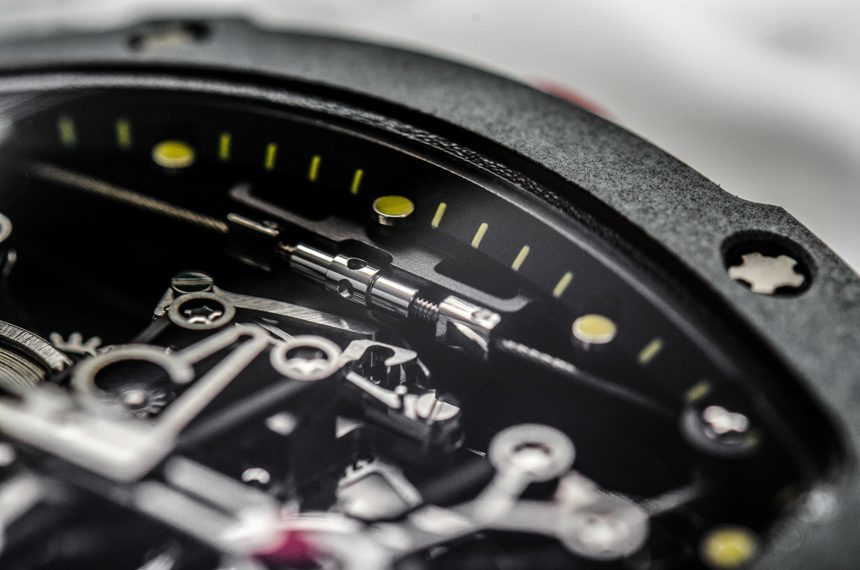
From a managerial approach it is finding the necessary know-how, human and technological resources, as well as the financial stability that makes ProArt such an impressive achievement. You see, backing up such investments mean a true challenge even for brands that belong to one of the all-powerful luxury groups with virtually inexhaustible budgets. And while some (or perhaps many) models of Richard Mille represent science-fiction more than common sense, once pricing and value proposition is included in the equation, the technical achievements of the brand remain unquestionable.
From a watch enthusiast’s point of view, love it or hate it, what makes Richard Mille stand out from most others in the industry is not only their constant search for the next outrageous idea; but also the fact that they are crazy – and successful – enough to build and dedicate a new state of the art manufacture to conceiving and realizing these out-of-this-world ideas. In the constant to competition that is present between the top players in the industry, ProArt has already and will continue to create key components of watches which help push the limit of what is possible in watch making.
Thinking about some of the more insane concepts realized there, like the bedroom wall poster-worthy RM27 Rafael Nadal or the RM59 Yohan Blake, one would imagine the place where they are born to be more like Mordor than anything else… and yet it is everything but: a calm place with engineers and craftsmen quietly involved in the tasks at hand, wandering around an array of futuristic metal and plexiglass machines. That is ProArt and that is where the next big thing from Richard Mille is going to take shape.
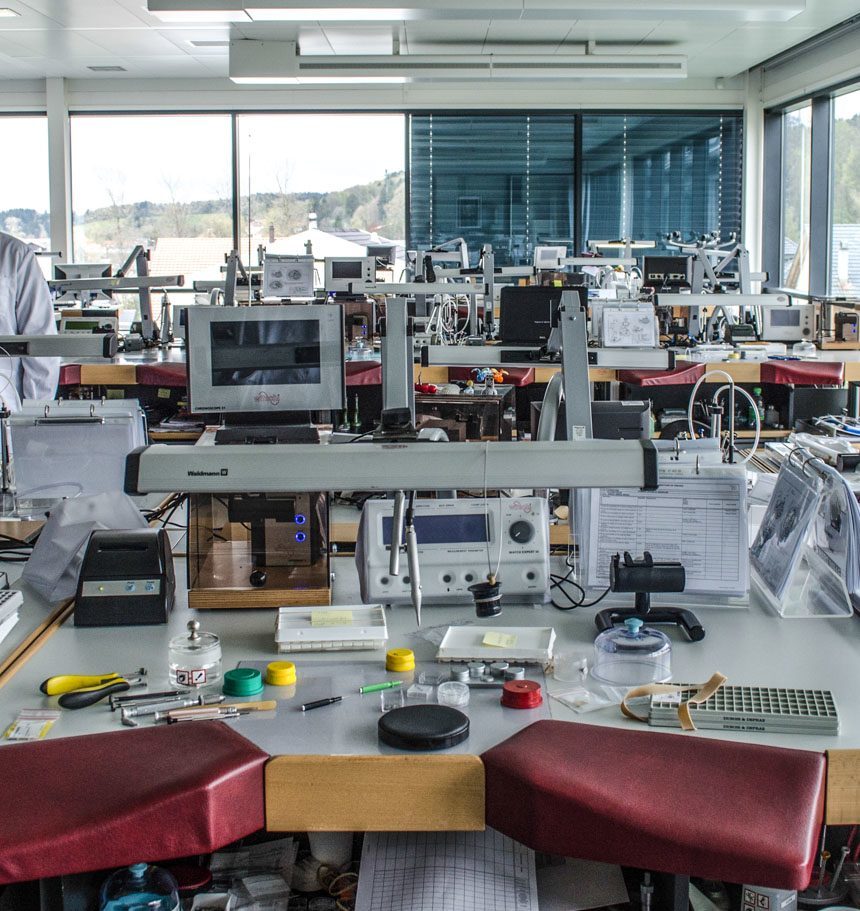
Our next stop was at the Richard Mille headquarters, just a few minutes away from the case manufacture, also in Les Breuleux. Beyond containing the brand’s offices, it is here where actual in-house assembly of the watches happen. As we noted, most movements used in Richard Mille watches are manufactured either by APR&P or the Vaucher manufacture, while the watchmakers working at the HQ are primarily responsible for casing up finished movements, as well as performing repairs. Actually, every single watch of the brand will be worked on at this place, at least for the casing up, testing and finalization of the pieces. To make things a bit more complicated it must be noted that this facility is capable of assembling any Richard Mille movement, regardless its complexity.
In essence, it can be said that while the absolute majority of the Swiss watchmaking industry works with suppliers at one point or another in making their products, things are a bit more hectic when it comes to Richard Mille. The primary reason for that is likely to be their quick and constant growth we mentioned above. It is this unceasingly expanding production that makes it difficult to bring the immensely complicated task of movement (and watch) assembly under one roof, further complicated by the number of different calibers and complications which find their way into the brand’s collections.
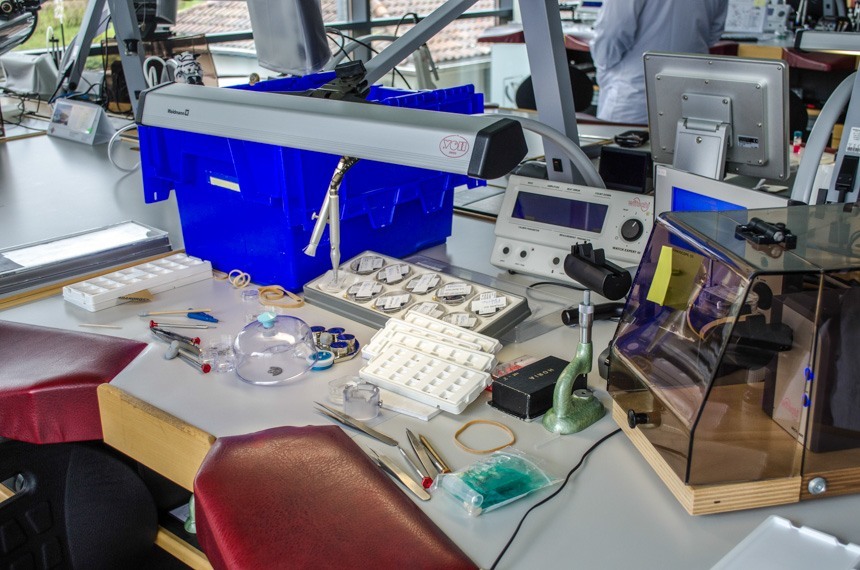
With that said, the headquarters in Les Breuleux is the decision-maker when it comes to product design, engineering, as well as all other production related issues – regardless of whichever partner is involved. Furthermore, as stated just above, all watches are cased up and finalized here. We had interesting timing for walking around the few dozen workstations situated on the first floor of the building, as all the watchmakers had just left for lunch. It was as though time had frozen in the workshop, with the tools and components the craftsmen had just used still laying around – albeit carefully covered away from dust when necessary, of course.
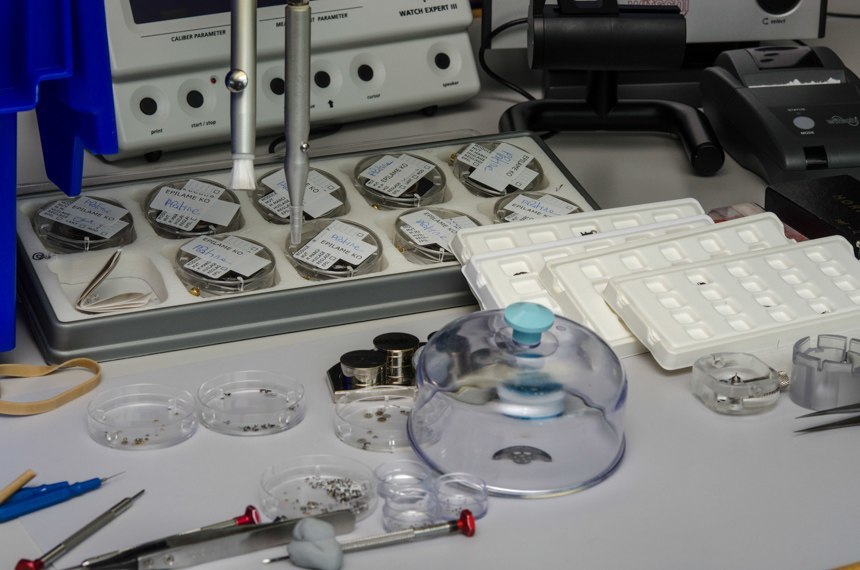
Some stations had movements still in their plastic holders as they were shipped from Vaucher, waiting for the watch maker to make the necessary modifications and to match them with the required cases. The empty workshop with still everything in place (and just the watchmakers gone missing) was as weird of a sight as it was inviting: I really wanted to take a seat at one of those benches and attempt to finish a project that was left there laying half completed. What steered me away though – beyond being familiar with my obvious limitations when it comes to hand-eye coordination and horrendous lack of any dexterity – were those booklet guides hanging by the desks, showing the myriad different tasks which are to be performed in the process of finalizing even the more simple pieces.
You see, part of the appeal of all Richard Mille collections comes from a rather unique sense of technical complexity, something that becomes truly tangible only at the time one sees one of these items in the metal… or carbon fiber, or whatever. Is it something that does – or has to – appeal to everyone? Absolutely not! But it is this strong technological flair that remains one of the key selling points of a Richard Mille watch, well, at least for those who can afford one.

In conclusion, this behind the scenes look revealed how the brand performs an impressive tight rope walk when it comes to synchronizing its different super-complicated and equally challenging projects between its headquarters as well as its proprietary facilities and key suppliers. In turn, as a reward in some weird and quite unprecedented way, they enjoy nearly unmatched freedom in setting their prices, as the market, so far, seems to absorb their consistently expanding production. Over the first decade of its operation, we saw Richard Mille laugh in the face of traditional watchmaking in more ways than we would care to remember, setting its own path, paved with interesting, often groundbreaking – and yes, sometimes odd – technological developments. The question now, for one, is how the brand will build on its present success, and second, what it will come up with next – but this, only time will tell. richardmille.com

